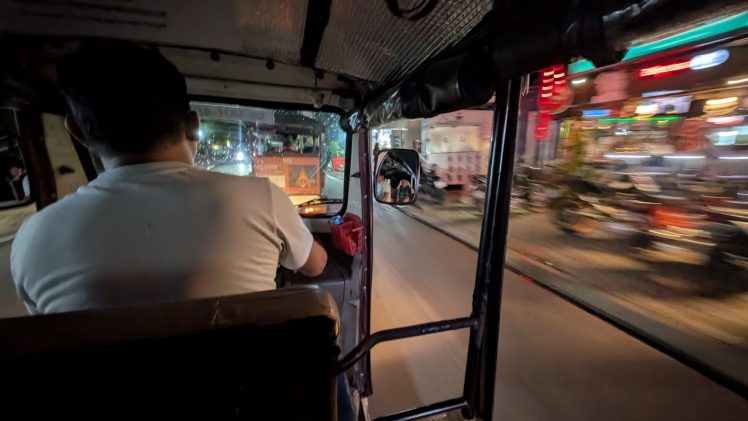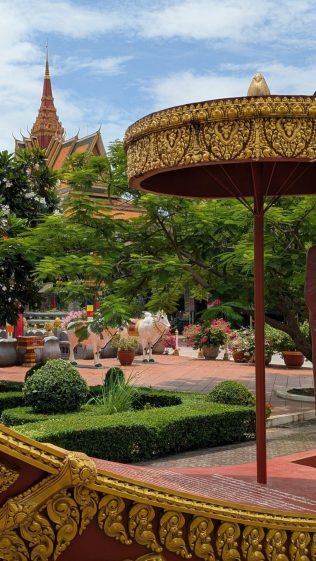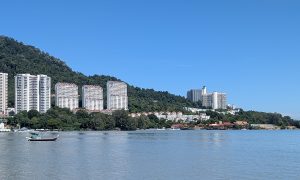Offering visitors a journey of both history and hope, Siem Reap has emerged as Cambodia’s beating heart of tourism, where ancient temples, a vibrant food scene, and the extraordinary resilience of its people converge.
Travel often has a way of rewarding curiosity, but few places stir the soul quite like Cambodia, a country I first visited in 2016. This year marked my third trip, and as was the case before, my most recent visit only left me wanting to return yet again.
For many, the name Cambodia itself is synonymous with the sandstone spires of Angkor Wat rising out of the mist, a monumental relic of the Khmer Empire’s brilliance. Visitors come from around the world to marvel at the ancient ruins of Angkor – crumbling yet, etched with both timeless artistry and a sort of defiant beauty as they nevertheless succumb in slow motion to the passage of centuries.
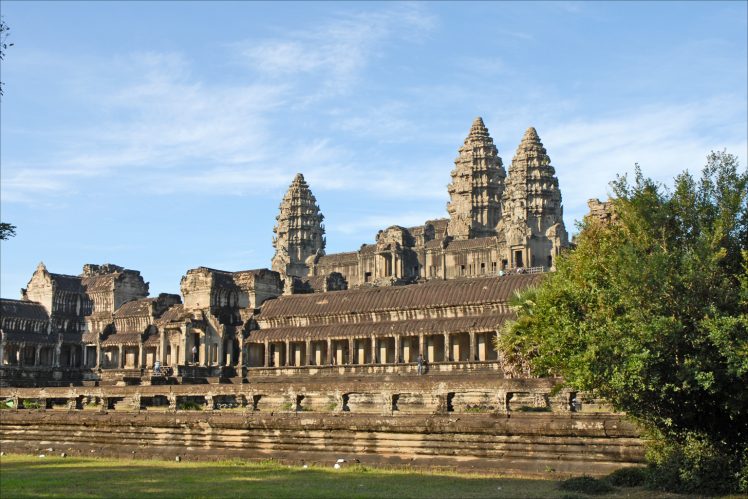
Although I didn’t visit Angkor Wat this time, this unmissable stop was of course at the very top of my itinerary on my first trip to Siem Reap, and I spent large chunks of three days exploring the expansive grounds and quite a few of the many surrounding temples, as well. As that trip in 2016 was my first visit to Cambodia, the time spent at the Angkorian ruins left an indelible impression.

For me, as for so many others, by day, the temples of Angkor dominated my travel time, while by night, the small city’s legendary Pub Street beckoned with cheap beer, delectable lok lak, amok, and other Khmer dishes, surprisingly good takes on Mexican and Greek food (of all things), and the giddy hum of travellers swapping stories and chatting with locals.
Yet beneath the surface pleasures of temple exploration and tourist nightlife lies another, far deeper story – one of resilience, survival, and the sheer will to reclaim joy and hope after unimaginable suffering.
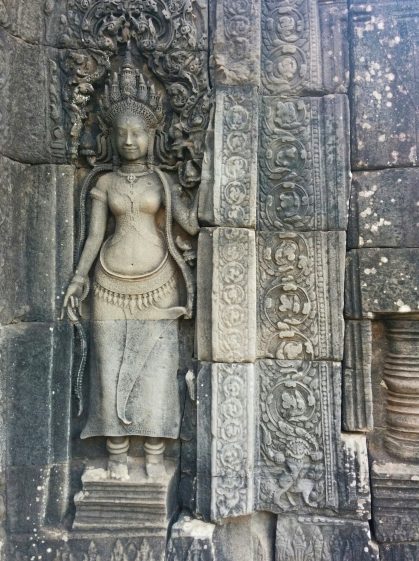
Although this is a travel article and not a history lesson, no one can properly understand and appreciate Cambodia today without acknowledging the pain of its past. Less than 50 years ago, this was a country broken apart by civil war and subsequently consumed by one of the most brutal and ruthless genocidal crusades in modern history, a campaign that led to the violent purge of nearly a quarter of Cambodia’s entire population at the time.
The Khmer Rouge years (1975–1979) left a scar that has not yet fully faded: some two million lives lost, families shattered, and a generation traumatised. Entire institutions were dismantled, from schools to theatres to monasteries – and artists, writers, and performers were among those most brutally targeted, along with monks, the educated, and all manner of minorities. Going beyond even ethnic cleansing, it was a calculated attempt to erase culture itself, to strip away the soul of a nation.

RESILIENT AND REBORN
And yet, Cambodia endures. In the aftermath of such unfathomable horrors, the very fact that Siem Reap is once again alive with colour, music, and laughter is nothing short of extraordinary. Every motorbike buzzing down Sivutha Boulevard, every crowded night market stall, every volleyball match played on improvised streetside pitches, every tuk-tuk weaving through traffic is part of a wider story of revival, a testament to Cambodian resilience. If you know anything of Cambodia’s recent past, you cannot help but marvel at its ability to rise again, to create something vibrant out of unimaginable loss.
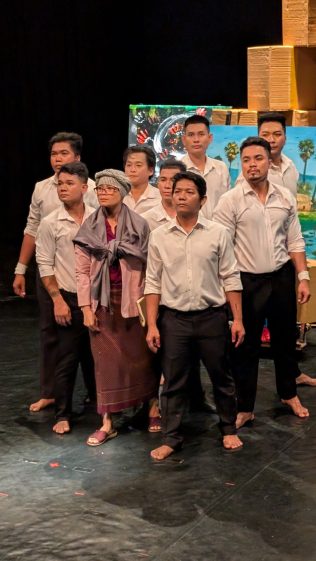
No experience in Siem Reap captures this spirit better than Phare: The Cambodian Circus. On the surface, it’s an evening show – acrobatics, live music, theatre, all performed under a big top tent. But Phare is more than entertainment; it is healing put into motion. The troupe is the public face of Phare Ponleu Selpak, an NGO founded by a group of Cambodian refugees in the early 1990s. Having fled across the border to escape the horrors at home, they found solace in drawing classes offered in the camps. Those classes became a lifeline, a way to process trauma and reclaim dignity. When they eventually returned to Cambodia, they brought that gift back with them. What began as a small arts school for disadvantaged youth in the town of Battambang has over time grown into an organization that transforms young lives through creativity.
The name Phare Ponleu Selpak, which translates to “The Brightness of the Arts,” reflects the organization’s mission: using art, performance, and creativity to bring hope, education, and opportunity to disadvantaged Cambodian youth in the aftermath of the traumatic Khmer Rouge era.
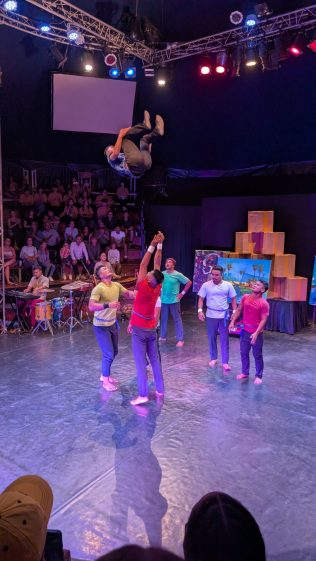
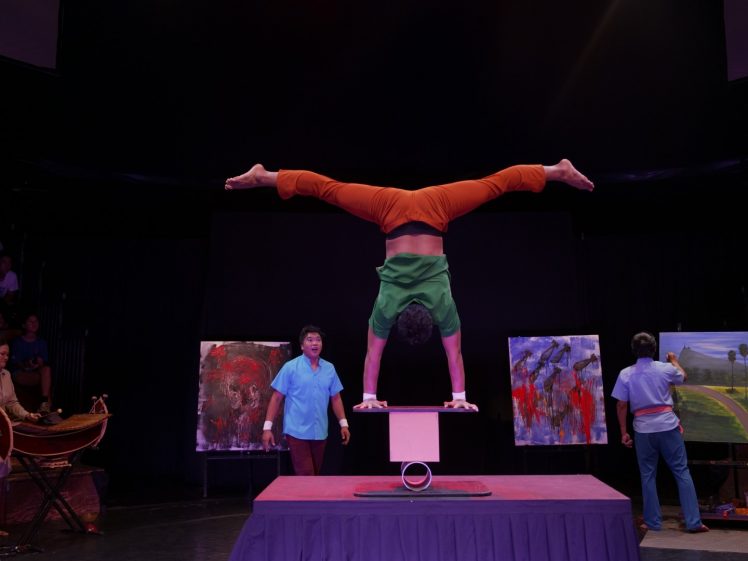
Watching a Phare performance in Siem Reap is to witness not just skill and artistry, but purposeful defiance. Every flip, every beat of the drum, every burst of laughter from the audience is a statement: Cambodia refuses to be silenced, and its people will not be defined solely by the tragedy of its past. The young performers are often the children of poverty, some carrying the legacy of their parents’ staggering trauma, all now channelling that hardship into something astonishing. They juggle, they amaze with feats of strength and balance, they act out stories of daily life and folklore, often with humour and wit, sometimes with searing intensity. It is entertainment with purpose – and for the traveller, it offers a deeper connection to the country than almost anything else that you could do in Siem Reap.
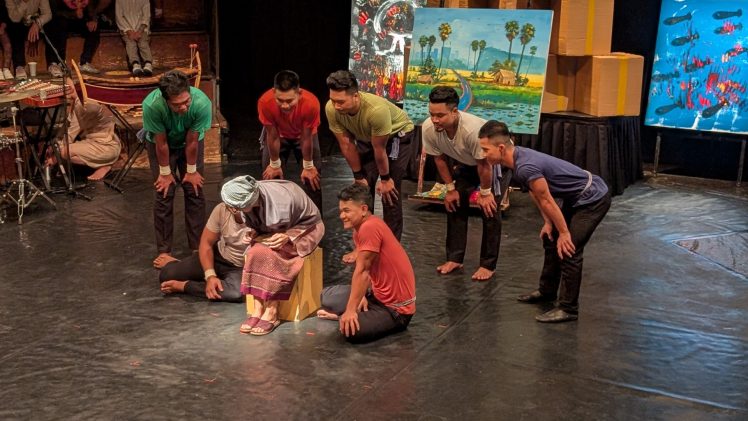
I’ve been to this charming city three times, and every time, I make it a point to attend a Phare performance. Nine years after my first visit, having watched and met some of the young student artists during the show back in 2016, some of those students are still performing… but they’re no longer students. They are now the masters, training and teaching the next generation of Phare artists. After the performances, audience members are invited to come down and meet the artists, and I did so this time, finding those photos from 2016 to show to the same incredible performers, who were amazed to see photos of themselves from a show some nine years ago!
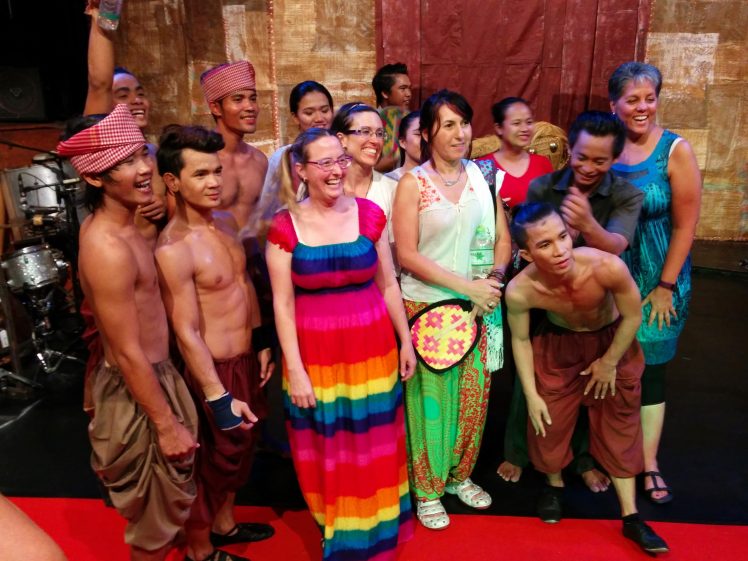
If you visit Siem Reap, you quite simply must attend a Phare performance. To sit under that tent is to get a sense of Cambodia’s spirit today. It’s not a slick, polished performance, but rather one that’s authentic, raw, youthful, occasionally imperfect, and wonderfully hopeful. It’s the kind of experience that makes you rethink the role of travel itself – not just consuming sights and posting on social media, but really engaging with stories, sharing in victories both small and profound, and genuinely feeling the pulse of your destination. In the case of Phare, it’s an explosion of Cambodian culture, history, and art – all shared in an intimate, breathtaking performance that will leave you feeling exhilarated and moved in equal measure.
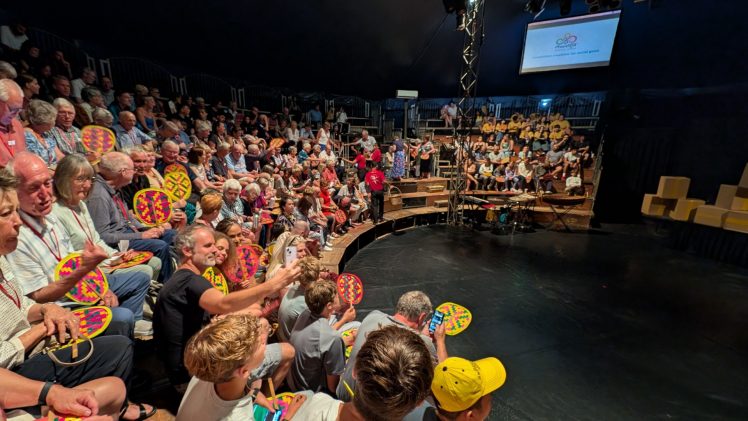
A COMFORTABLE HOME BASE
On this visit, I stayed at Shinta Mani Angkor, a place I had stayed before, but in the years since the pandemic, quite a few things had changed. Previously, there had been two rather distinct properties on opposite sides of a quiet street near the river. They were both appealing, but in different ways. Now, the funky Shinta Mani Shack of old – which was a testament to celebrated architect and designer Bill Bensley’s amazing creative quirkiness – has given way to a stunning collection of 10 private pool villas. They still carry that signature Bensley vibe, but the concept has been tilted more towards what could be called artistic elegance, now favouring indulgence over whimsy.
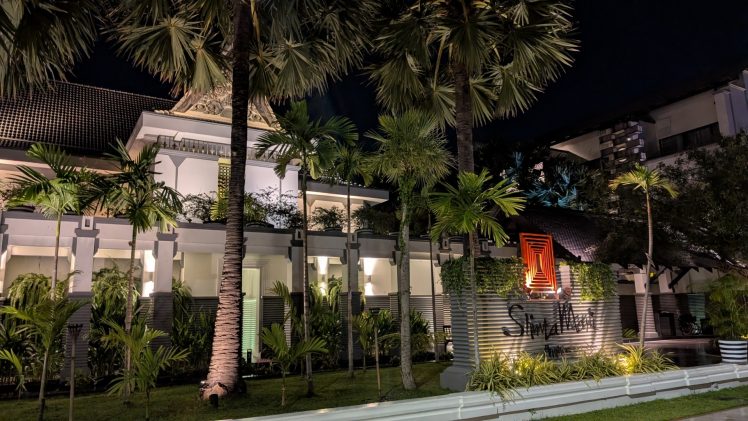
I had booked a standard room, but as I was visiting in the low season (which is brilliantly called “green season” in Siem Reap), and perhaps in consideration of my previous stay, the Shinta Mani team were gracious enough to extend an upgrade. I still checked the going rate online, of course, and was shocked: these villas, in actual fact, are an incredible value-for-money proposition if you travel during the green season. What’s more, staying at Shinta Mani contributes to the Shinta Mani Foundation, which funds a number of commendable initiatives for the betterment of Cambodia. (Read more under ‘Travel Tips’ at the end.)
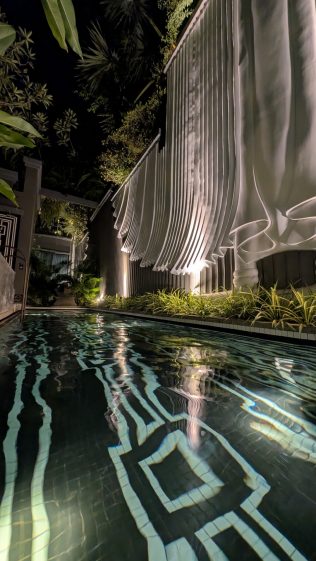
Each villa offers a spacious layout with its own private swimming pool and lush garden courtyard, ensuring complete seclusion for guests. Interiors are playful yet refined, showcasing Bensley’s signature flair for contrast, eclectic furnishings, and Khmer-inspired accents. Think oversized outdoor bathtubs, hand-crafted details, an abundance of plant life, and bold artwork that mixes sophistication with a dash of quirkiness. There’s even an upstairs garden terrace for relaxing amid the villa’s prolific landscaping.
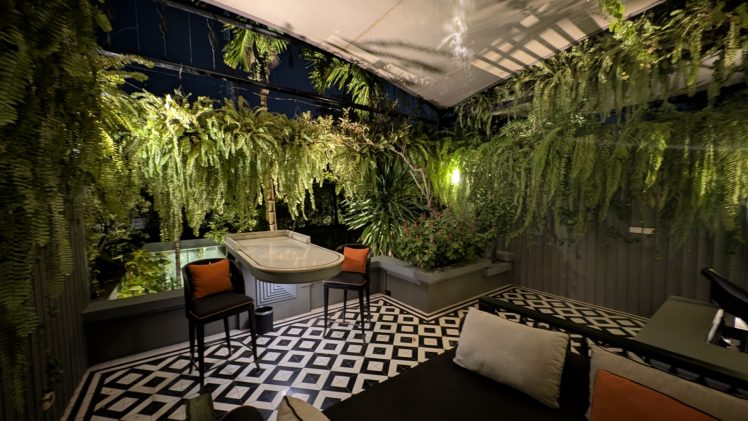
And that’s not all. Guests staying in these villas enjoy personalized butler service (a shout-out here to my friendly and efficient butler, named Son), curated in-villa dining, and exclusive access to Shinta Mani’s upscale facilities, all while being just minutes away from Angkor Wat and a short walk from central Siem Reap. It was always a complete delight returning to the comforts of the villa, and I made use of the lap pool several times. On one occasion, a brief but torrential afternoon rainstorm chased me inside from the comfy sitting area by the pool, but apart from that, I routinely enjoyed the numerous outdoor spaces of the villa.
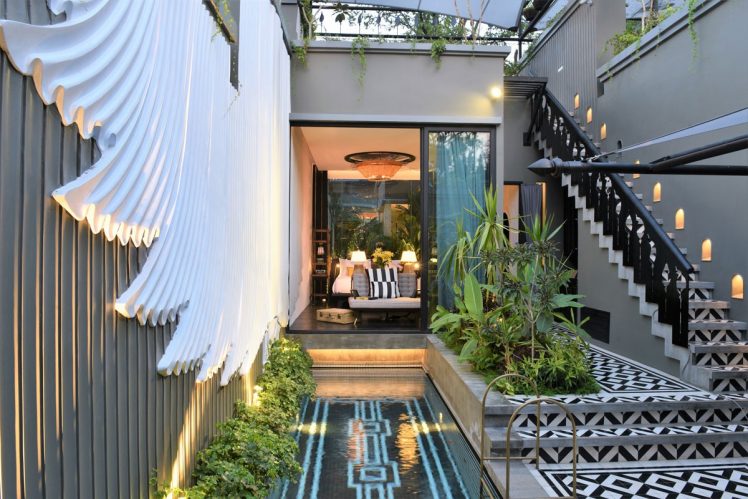
I didn’t take advantage of the in-villa dining option, but rather ate at the property’s incredible restaurant, Kroya, under the guiding hand of Executive Chef Chanrith, who in addition to his talents with traditional Khmer cuisine, also specialises in fine French and Italian dining. The tasting menu I savoured at Kroya was nothing short of exemplary, and as with so many things in Siem Reap, offers considerable value for money – especially when taking into account the quality cuisine and meticulous preparation, gracious service, and beautiful designer ambiance of the restaurant. My stay at Shinta Mani was an absolute delight, and I spent a fair bit of time just strolling around the property, taking in the various sights and eclectic design ethos as I talked with staff, listening to their fascinating tales.
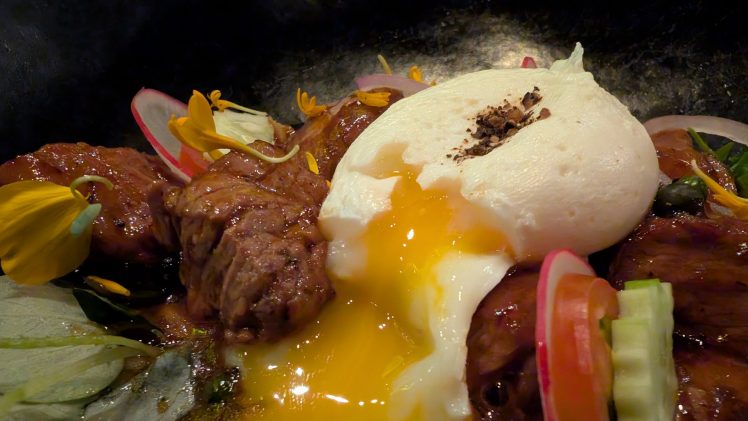
And beyond the engaging people, travel in Cambodia often presents other, equally unexpected stories. Take Kampot pepper, for example. Long acclaimed as the finest peppercorn in the world, it was nearly wiped out complete during the Khmer Rouge era when farms were destroyed and farmers were displaced or killed. For decades, the world forgot about Kampot’s pepper fields. Yet today, those glossy green vines are thriving once again in the red earth of southern Cambodia.
The spice has earned coveted Protected Geographical Indication (PGI) status in the EU, and discerning chefs from Paris to Tokyo prize its complex heat and subtle citrusy notes. Particularly when made into the incredible local pepper lime sauce (which I couldn’t get enough of upon discovering it at my Kroya dinner), the Kampot pepper could quite literally be considered the taste of Cambodia’s comeback.
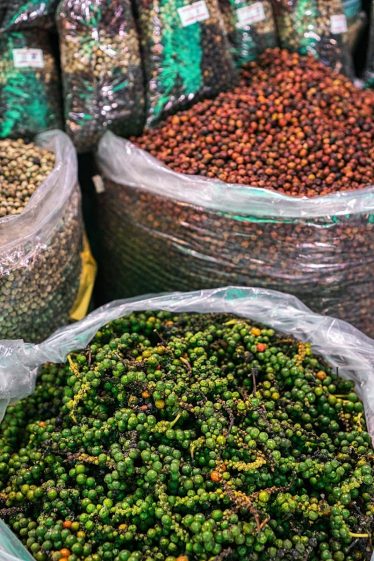
As a tourist, to trace these threads – from something as under-the-radar as the rebirth of Kampot pepper, to the vibrant energy of Phare’s performers, and the global magnetism of Angkor Wat – is to understand Cambodia not as a postcard of temples, but as a living, breathing country. It is a place that has suffered through unimaginable darkness, and yet offers travellers both beauty and truth: the grandeur of ancient stone, the hopeful resilience of a nation rebuilding itself, and the simple joy of a peppercorn bursting with unique flavour.
So yes, Siem Reap is a magnet for tourism in many respects. The Angkor ruins inspire awe, the food and nightlife of Pub Street deliver fun, but it’s the stories behind the surface – of endurance, of artistry, of sombre stories told and joyful performances staged – that will linger in your memory long after your flight home.
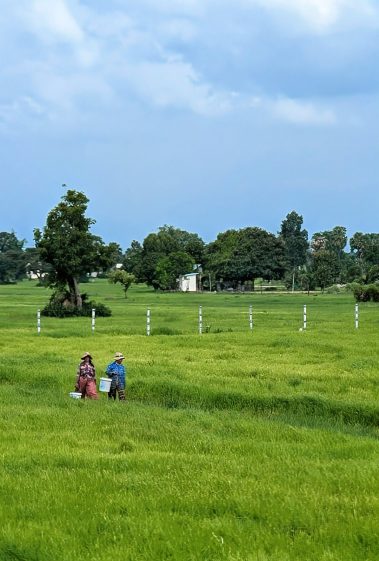
TRAVEL TIPS
Getting There
Though Siem Reap draws tourists from near and far, it still hasn’t quite rebounded to its pre-pandemic numbers, and it’s a small city (about 140,000 in the city proper), so flight choices are not numerous. In fact, for now, AirAsia is the only game in town if you want to fly direct. For travellers in Kuala Lumpur, this is of course great news. Book your seat on AirAsia, and enjoy the short two-hour flight to Siem Reap’s new international airport. You can always take connecting flights through Bangkok or Phnom Penh, but we prefer the direct route, so were pleased to learn AirAsia still offered this option. (https://www.airasia.com/en/gb)
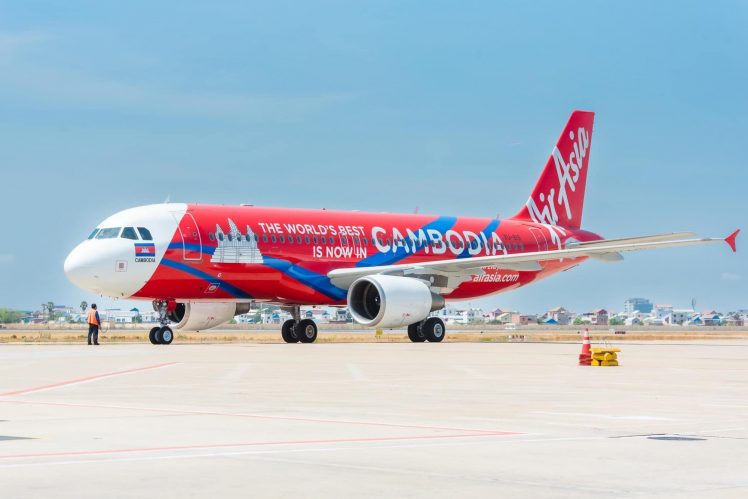
Arrival
Malaysian nationals are welcomed visa-free to Cambodia as fellow ASEAN members. Most other nationals will need a visa. The easiest way is to pre-purchase the visa online at www.evisa.gov.kh. This is the official government site, and we feel it’s the best and most secure. Getting through immigration at Siem Reap is generally quite smooth and efficient.
Siem Reap’s new international airport (SAI) is about 45 km from the city itself, much further away than the old airport, but boasting plenty of room for future expansion, both in physical size and capacity. (The previous airport was also just 5–7 km from Angkor Wat. Aircraft noise, vibrations, and air pollution were seen as risks to the temples’ long-term preservation. UNESCO had recommended relocation to safeguard the site.)
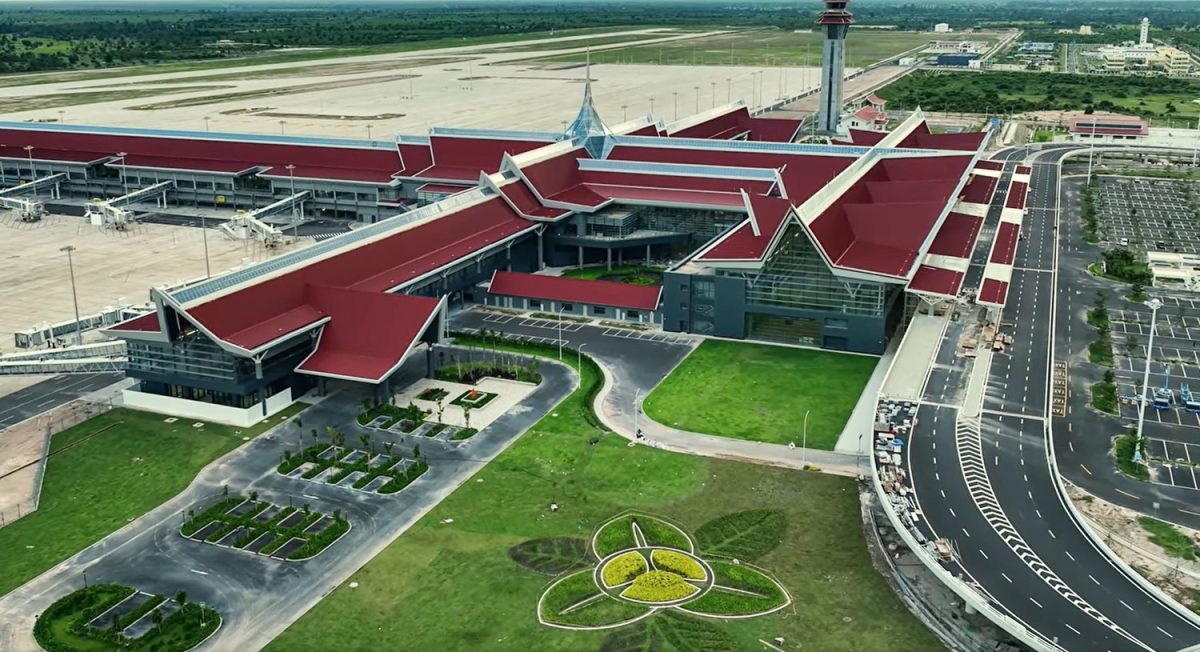
Transfer options, if not covered by your hotel, include an airport shuttle bus to a central drop-off point (about RM35), tuk-tuk (about RM70), or private car (RM140). You can use your local Grab account to summon a ride and check prices, or you can negotiate with a taxi driver at the airport and sometimes get a better fare. The journey takes about an hour. I took an enclosed tuk-tuk to town, which was enjoyable and quite scenic in parts, then used the airport shuttle bus to get back. (https://english.sai-airport.com)
Stay and Do
Shinta Mani Angkor, with just over 100 rooms and suites, is conveniently located on a quiet street in the Royal District near the Siem Reap River. The location is ideal, lying between the town’s centre, which is within easy walking or cycling distance (about 1 km to Pub Street or the Art Centre Night Market), and the temples of Angkor themselves, with Angkor Wat about 6 km to the north.
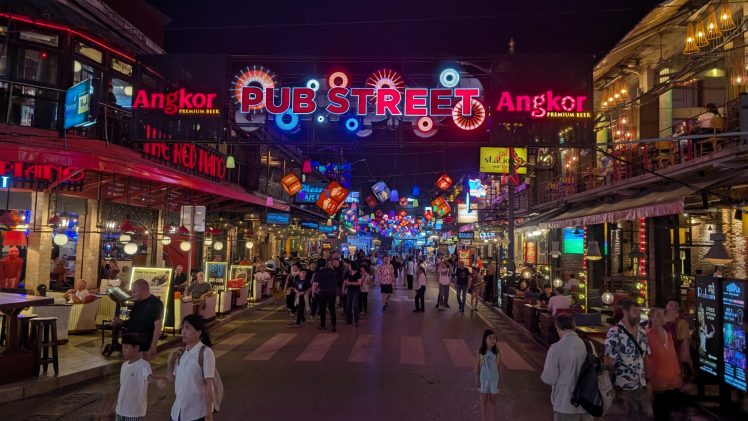
A true oasis in the city, the resort features a gorgeous pool, dining options, a fine spa, and an art gallery, with proceeds supporting the Shinta Mani Foundation. This foundation was founded by Bill Bensley and Sokoun Chanpreda with a mission of uplifting individuals and making a positive impact through a variety of initiatives. When guests stay at any Shinta Mani property in Cambodia, they fund – both directly and indirectly – this foundation, thus making a real and meaningful difference for the people, communities, and ecosystems of Cambodia. (https://shintamani.com/angkor)
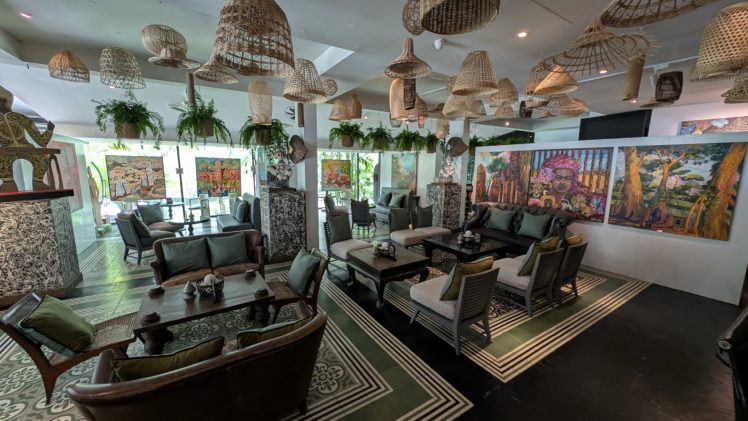
Phare The Cambodian Circus is a must-do experience to put on any Siem Reap itinerary. A quick check of Tripadvisor will affirm that nobody leaves this incredible show feeling they didn’t get their money’s worth. Any of the four currently running productions will be riveting, but for a programme that’s as moving and inspiring as it is amazing, choose Sokha, which tells a powerful and emotional story. It’s based on the true-life experience of Phare Ponleu Selpak’s founders – from when they were young students in a thriving Cambodia, their survival of the Khmer Rouge era, and through to their vision and creation of a school using art to help heal and educate other children. (https://pharecircus.org/calendar-productions/#productions)
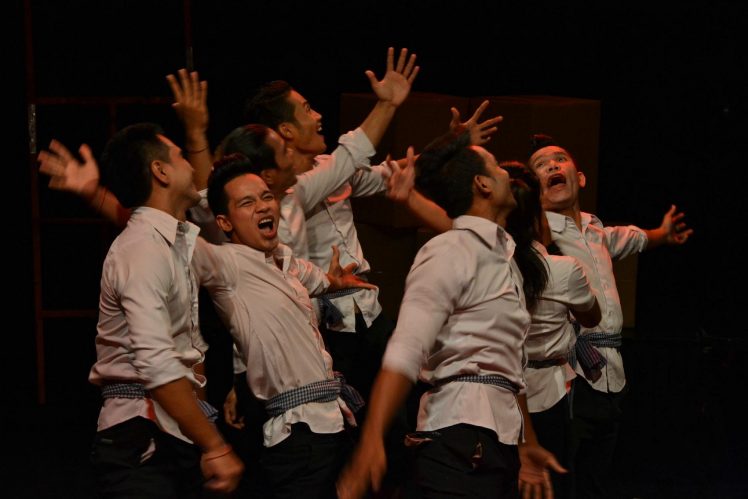
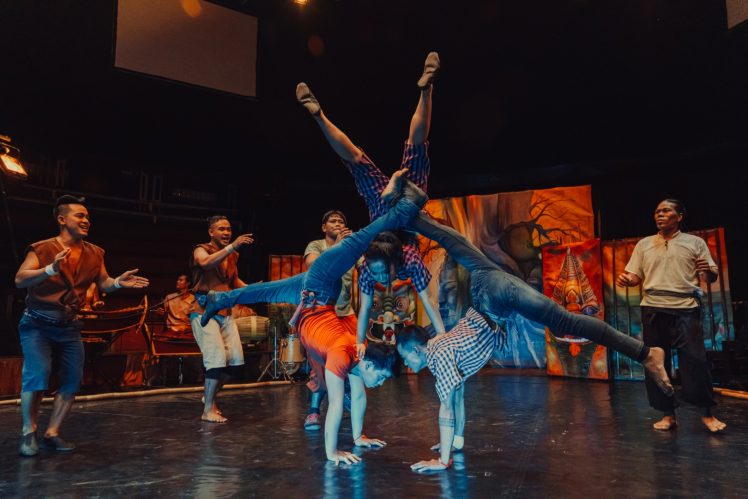
Shopping and Dining
The entire area around Pub Street (Street 08) in the heart of Siem Reap is filled with options for dining, drinking, and shopping. Prices are usually clearly stated and may be in USD, the local currency (KHR), or both. Credit and debit cards are accepted in many, but not all, outlets. ATMs are widely available, but a US$5 fee is imposed for cash withdrawals. Moneychangers are available here and there, as well, but it’s recommended to just do your cash exchanges before leaving Malaysia. When paying with US dollars, you’ll almost always get any change returned in Cambodian riel.
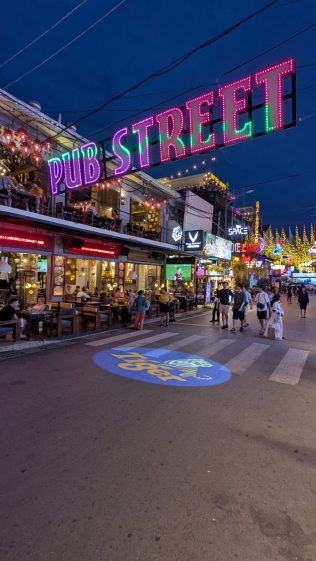
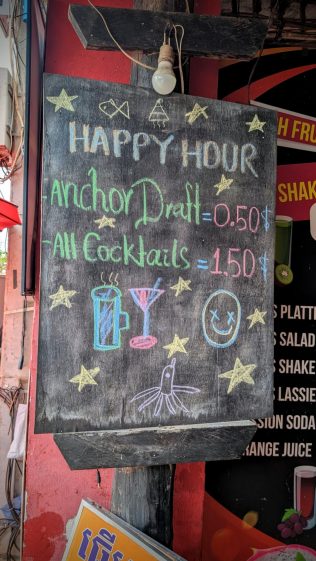
Even in the off season, Pub Street is a hive of activity, but much more so at night. Cold draught beers are available nearly everywhere for 75¢ (about RM3), although some places off the main street still serve up beers at the ‘old’ price of 50¢. Local Khmer cuisine is offered all over the place (be sure to wander down the narrow alleyways between streets), but if you want to sample some very respectable Mexican food, head to Viva Mexican Restaurant – there are two outlets in the Pub Street district.
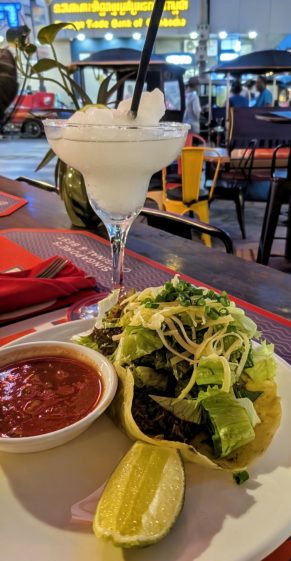

True Tex-Mex aficionados can also seek out Maybe Later Mexican Bar & Grill, just nearby on Street 14. (Try the excellent birria tacos, three for $7,50. www.maybelatertaco.com) For Greek food, check out Elia Greek Kitchen (https://eliathegreekkitchen.com), which offers tasty Mediterranean fare in a lovely, expansive restaurant with plenty of live plants.
For an early evening drink with a view before venturing out to dinner, visitors can head to The Aviary Hotel, just a short stroll from Pub Street. Go upstairs to Glide Bar to enjoy its open-air setting, and value-for-money beverages and bar snacks served by enthusiastic staff. The cozy bar has comfortable lounges and tables and chairs in its interior and benchtop tables on the exterior overlooking the hotel pool. Happy hour runs from 5 to 6pm daily, and boasts 50% discounts on beers and cocktails. Visit www.theaviaryhotel.com for info.
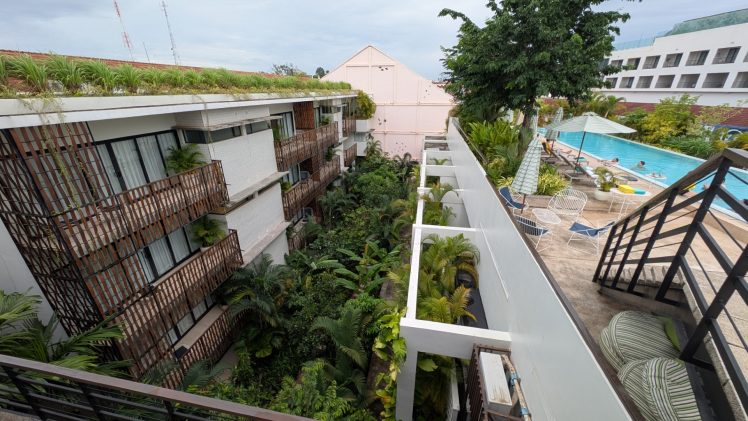
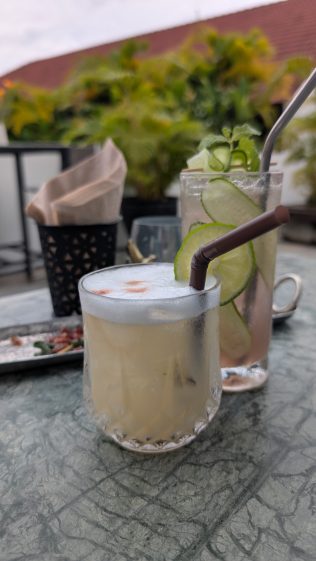
Along the Siem Reap River, another fine choice is the Sky Bar @ La Riviere d’Angkor. Note that you’re only one floor up, so “Sky Bar” is a bit of a stretch, but there’s loads of charm to be found here with a 3 to 6pm happy hour featuring 2 for 1 cocktails. Light snacks and even meals are also available. (www.larivieredangkorsiemreap.com/skybar)
For a posh dinner of authentic local cuisine that will certainly impress, either dine at Shinta Mani’s Kroya (https://kroya.restaurant/) or walk down the river to Malis Siem Reap, a beautiful restaurant that serves impressively prepared Cambodian dishes in an upscale setting. (www.malis.thalias.com.kh/malis-siem-reap)
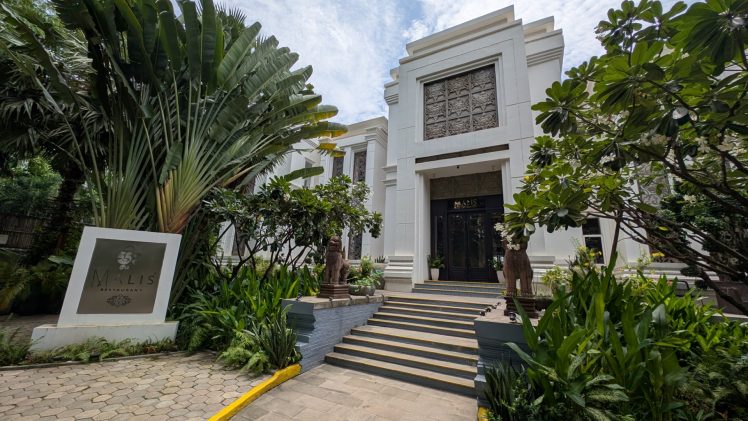
For something less extravagant, but no less delicious or authentic, consider Amok by Chef Kimsan, in the Pub Street area. In addition to fabulous meals, Amok also offers regular cooking classes, which seem to be enthusiastically attended and well-received. (https://amokrestaurant.com)
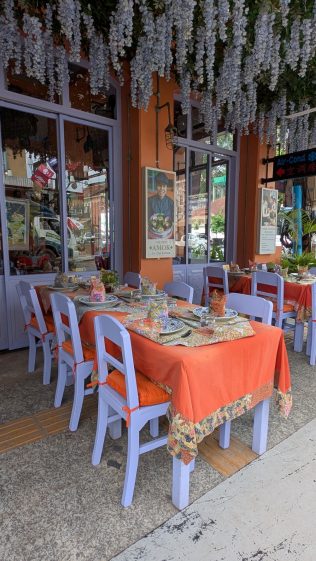
Getting Around
Depending on how far you want to wander, Siem Reap is very walkable. Many hotels and resorts also have bicycles available for guest use. Of course, tuk-tuks are ubiquitous, and you can either flag these down on the street, or use your Grab app to summon them. Fares are incredibly cheap because the distances are often fairly short. Buy a roaming package for Cambodia before you travel to make life with your phone much easier while in Siem Reap.
